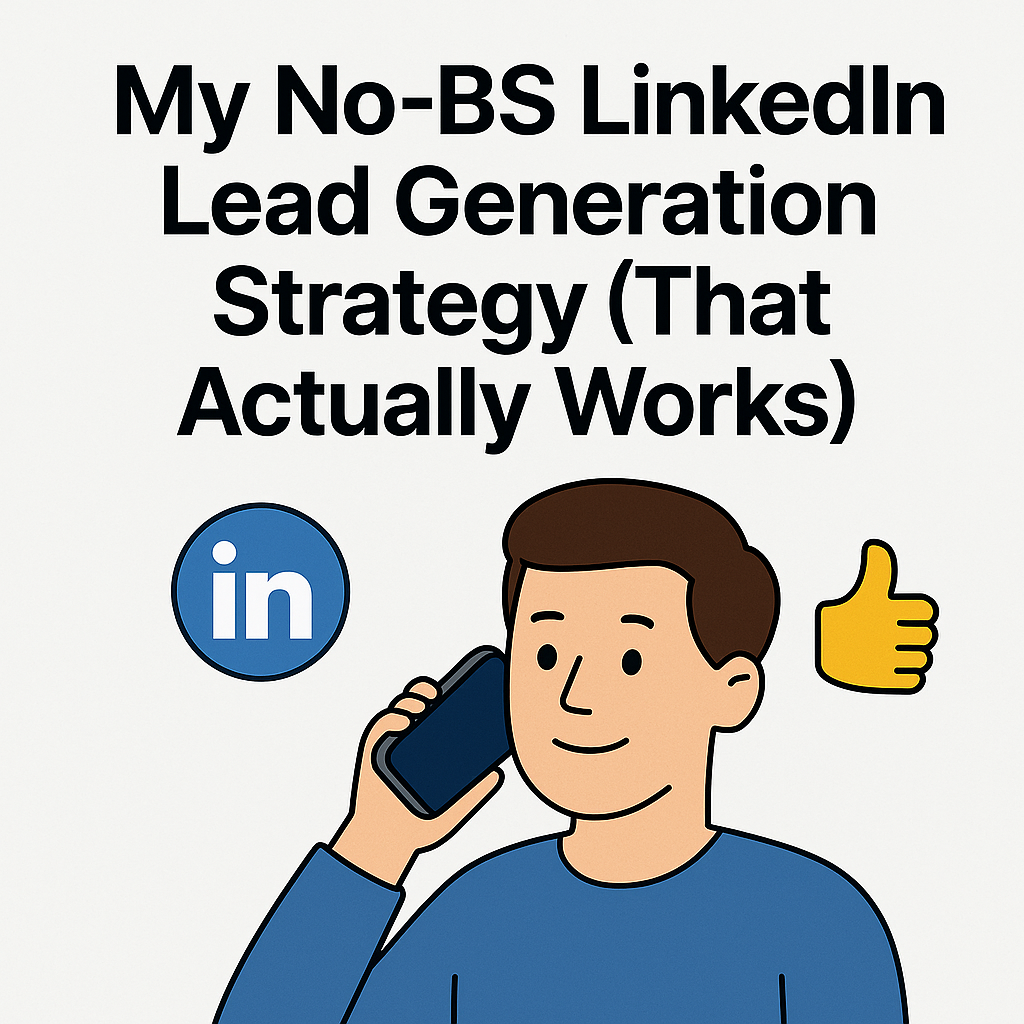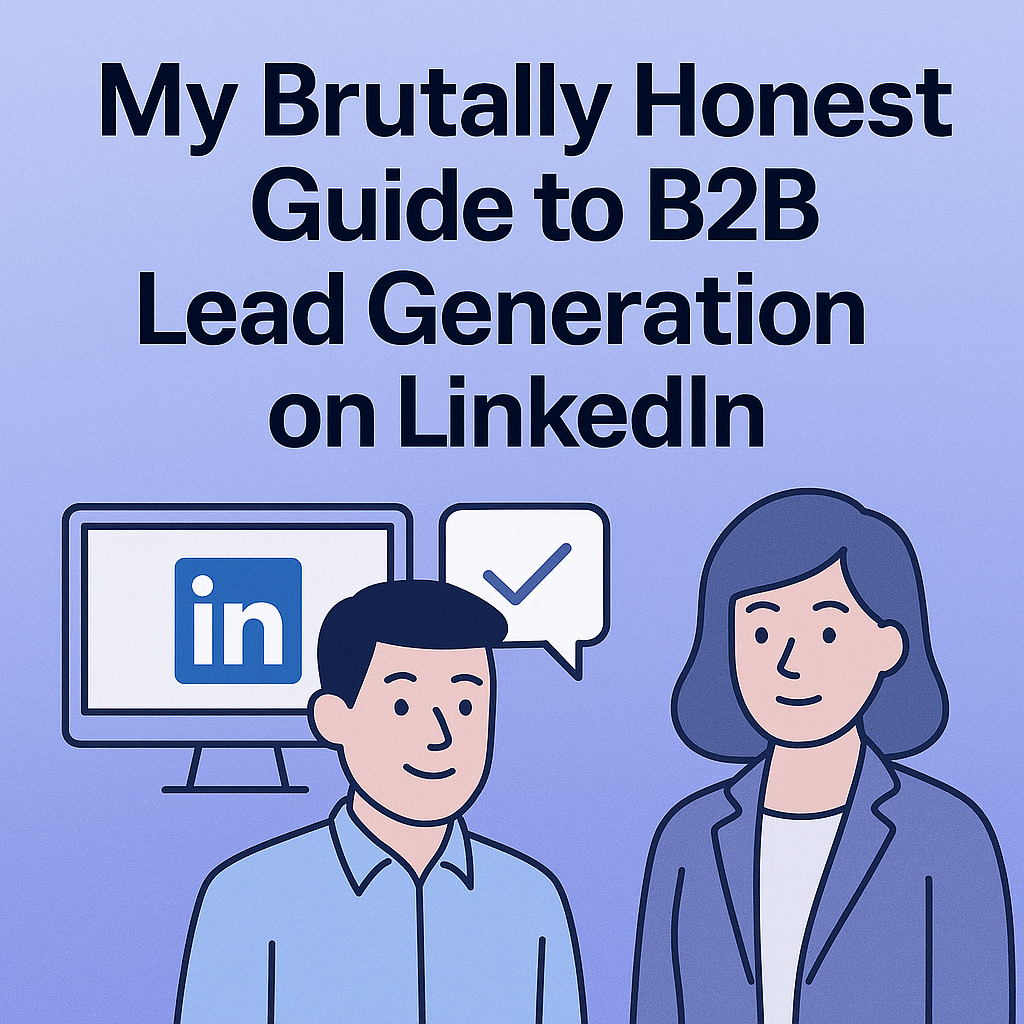From Cold Calls to Hot Leads: My No-BS Guide to the Best Intent Data Providers in 2025

You'll agree that cold outreach can be brutal. I remember spending weeks crafting the 'perfect' email sequence, only to be met with deafening silence or the occasional 'unsubscribe.' 😩 It felt like shouting into a void. I was burning out, my pipeline was dry, and I genuinely thought I wasn't cut out for sales. My biggest mistake? I was talking to everyone, which meant I was connecting with no one. Sound familiar?
Everything changed when I stopped chasing ghosts and started following digital footprints. That's what intent data is: a trail of clues left by prospects who are already researching a solution like yours. It’s the difference between crashing a random party and being on the VIP list.
But here's the catch: not all of the best intent data providers are created equal. Some sold me outdated signals, while others provided vague company surges with no actual contacts. It was a mess.
This guide is the resource I wish I had when I was struggling. It’s my personal, no-BS breakdown of the top platforms on the market, from industry giants like Bombora and 6sense to specialized players like GojiberryAI and Leadfeeder.
We'll dive deep into what makes them tick, who they're really for, and the painful mistakes to avoid. Each review includes direct links to help you make an informed decision. Ready to stop guessing and start closing? Let's get into it. 👇
1. GojiberryAI
When you’re a startup or a scaling B2B company, every lead counts. You can't afford to waste time chasing prospects who aren’t ready to buy. This is where GojiberryAI enters the chat and completely changes the game. I’ve seen countless tools that scrape data, but GojiberryAI stands out by focusing on what truly matters: real-time buying signals on LinkedIn.
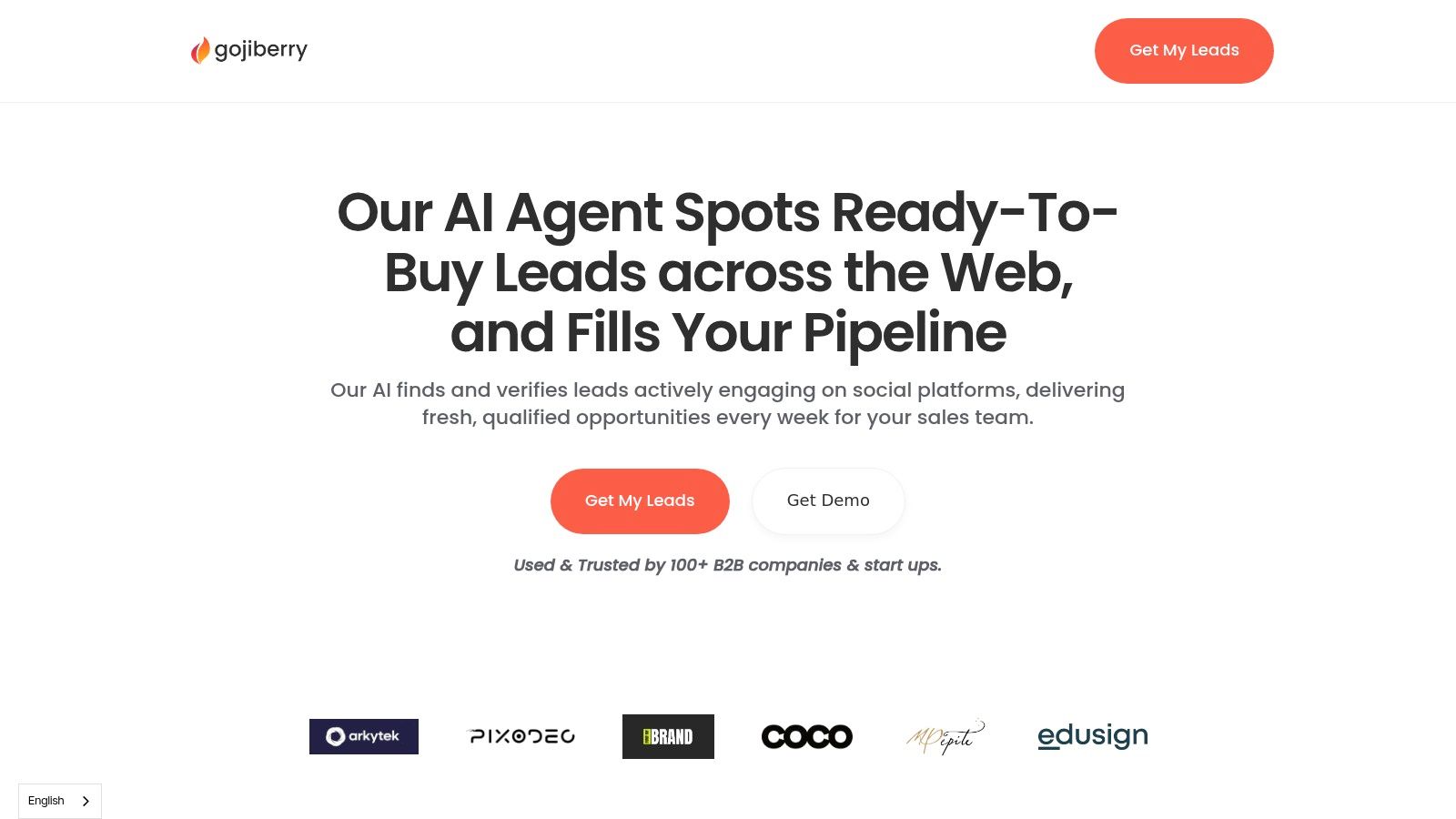
It’s one of the best intent data providers. It doesn’t just give you a list of names. It sends warm, qualified leads directly to your CRM or Slack. We're talking about prospects who just changed jobs, engaged with your competitor's content, or posted about a problem your solution solves.
I used to spend more than 10 hours a week on manual prospecting, a very exhausting task. GojiberryAI automates this, and the results are stunning. Users report a 50% higher reply rate on LinkedIn and 73% book a meeting within their first week. It’s a true growth engine. 🚀
Key Features & How to Use Them
To get the most out of GojiberryAI, you need to think like a detective. What signals would your ideal customer show right before they need you?
- Real-Time Signal Tracking: Go beyond basic firmographics. Set up alerts for job changes (e.g., a new "VP of Sales" is likely to review their tech stack), keyword mentions in posts, and engagement with competitor pages.
- Automated Lead Enrichment: Forget manual data entry. The platform automatically identifies verified emails and phone numbers for high-intent contacts. Pro Tip: Connect it directly to your CRM to instantly create new, enriched contacts for your sales team to engage with.
- Direct Workflow Integration: Get notified where you work. Set up a dedicated Slack channel (e.g., #hot-leads-from-gojiberry) for instant alerts. This enables your team to seize opportunities in minutes, not days.
What to Do (and What to Avoid)
- DO: Customize your signal triggers obsessively. The more specific you are, the higher the quality of your leads will be.
- NEVER: Don't treat these leads like a cold list. Your outreach should reference the signal you tracked. For example, "Saw you just started as the new Head of Marketing at [Company] - congrats! Leaders in your role often look to solve [problem] in the first 90 days."
The Bottom Line
GojiberryAI is a powerful ally for any B2B sales team serious about efficiency and acceleration. While its focus is primarily on LinkedIn signals and pricing isn't public, the ROI is undeniable. It saves countless hours and connects you with people actively looking for a solution.
- Best for: Founders, sales teams, and scaling software companies.
- Pricing: Not publicly disclosed; requires a demo.
- Website: gojiberry.ai
2. Bombora
Bombora is a heavyweight in the B2B world. It is often considered one of the best intent data providers due to its unique data co-op model. Instead of just scraping the public web, Bombora collects consent-based data from over 5,000 B2B publisher websites, forming a private data source.
This gives their flagship product, Company Surge®, a powerful edge. It essentially tells you which companies are suddenly researching topics relevant to your product, signaling they're moving into an active buying cycle.
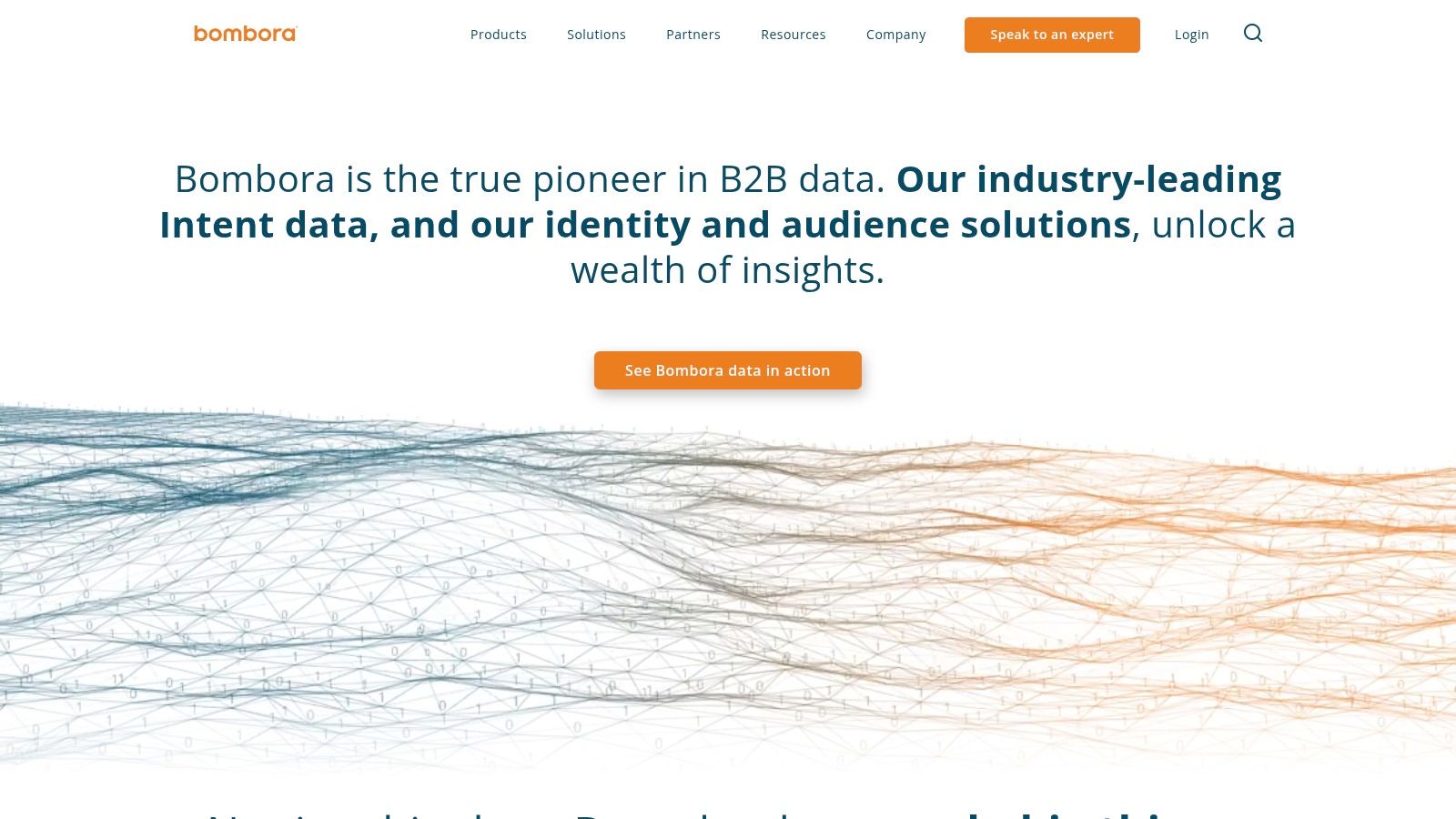
I've found their user interface to be surprisingly clean for such a data-rich platform. This makes it easy to build reports and identify surging accounts. The real magic happens when you integrate it directly into your CRM.
A huge mistake is to treat this data as just another list. Instead, use the topic insights to personalize your outreach. For example, if a target account is surging in interest for "cybersecurity compliance," your first touchpoint should address that specific pain point, not your generic value proposition.
While it won't provide you with individual contact information, it masterfully points your sales team exactly where to look. For a deeper dive, explore these powerful intent signals to enhance your strategy.
Key Features & Considerations:
- Data Source: Exclusive B2B publisher cooperative.
- Best for: Enterprise sales teams needing high-fidelity, account-level buying signals.
- Limitation: Provides company-level intent, not specific contact details.
- Pricing: Custom, based on data volume and integrations.
- Website: bombora.com
3. 6sense
6sense positions itself as more than just an intent data provider. It is an "Account Engagement Platform" that wants to change how you connect with buyers. Its main strength is its AI-powered ability to look into the "dark funnel." This is the anonymous research that happens before a prospect fills out a form.
It connects these signals to specific accounts, essentially predicting which ones are in-market and ready for engagement before your competitors even know they exist. This predictive analytics engine is what truly sets it apart.
The platform excels at identifying the entire buying committee within a target account, not just one lead. I found its segmentation capabilities to be top-notch, enabling you to create highly targeted audiences for ad campaigns or sales outreach.
A key "do" is to leverage their timing recommendations; the platform suggests the optimal moment to engage. A common mistake we've seen is teams getting this rich data but failing to act on its timing signals, reaching out too early or too late.
While the platform is powerful, the integration process can be complex, so ensure your technical team is prepared for a hands-on setup.
Key Features & Considerations:
- Data Source: Proprietary AI analysis of anonymous web activity and firmographic data.
- Best for: Marketing and sales teams wanting to align on high-value accounts with predictive timing.
- Limitation: The setup and integration can be resource-intensive for smaller teams.
- Pricing: Custom, typically suited for mid-market to enterprise companies.
- Website: 6sense.com
4. ZoomInfo
ZoomInfo has evolved from a contact database into a full-fledged go-to-market platform. This makes it a strong contender among the best intent data providers. Its strength lies in combining a massive, verified database of company and professional contacts with real-time signals of buyer intent.
This fusion lets you see which companies are researching topics that matter to you. You can also quickly access the contact information of key decision-makers in those companies. It's an all-in-one solution for prospecting and engagement.
I've found its user interface to be incredibly intuitive, and the detailed org charts are a goldmine for multi-threading deals. The seamless Chrome extension is also a game-changer for prospecting on the fly.
A cardinal sin? To pull a list and start blasting generic emails. Rather, use their intent data to identify an account, then leverage their contact data and organizational charts to craft a hyper-personalized message for the right person. For instance, if intent signals show interest in "lead generation software," reach out to the VP of Sales, not just a generic "info@" address.
If you're weighing your options, you may find it helpful to explore these powerful alternatives to ZoomInfo to ensure you select the perfect fit.
Key Features & Considerations:
- Data Source: Proprietary data gathering, including a contributory network and public data analysis.
- Best for: Sales and marketing teams seeking a unified platform for intent data and contact acquisition.
- Limitation: Data can occasionally be outdated, and segmentation options can feel limited for highly niche campaigns.
- Pricing: Custom subscription tiers based on features, credits, and user licenses.
- Website: zoominfo.com
5. Demandbase
Demandbase has built a strong reputation by integrating intent data into a complete Account-Based Marketing (ABM) platform. It analyzes billions of B2B behavior signals every month, providing a real-time view of active accounts. Its strength as a top intent data provider lies in its ability to link these signals directly to its advertising and website personalization tools.
This makes Demandbase a powerful all-in-one solution for teams that want to execute sophisticated ABM plays without juggling multiple vendors.
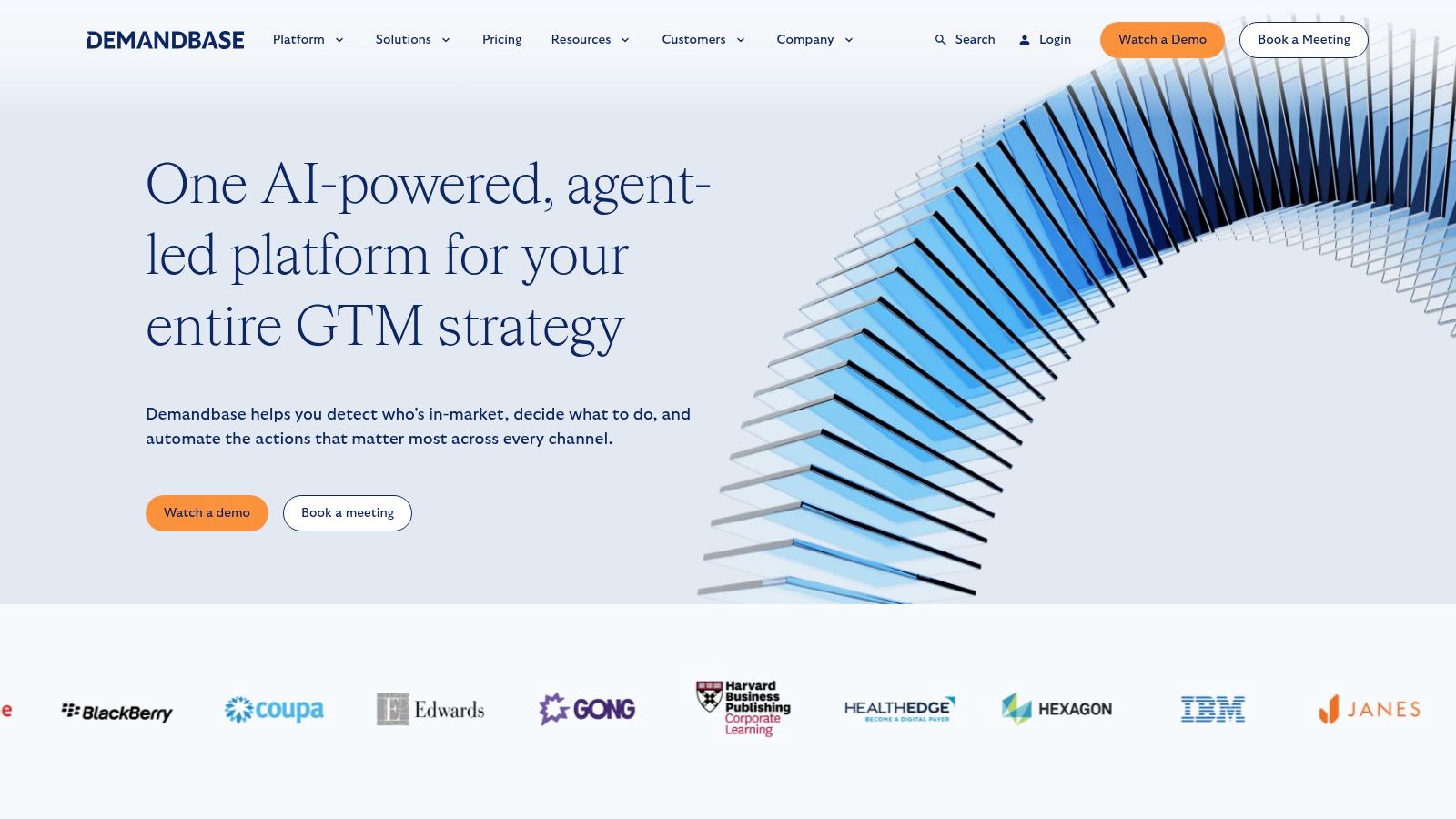
A costly mistake is to only use Demandbase for its advertising capabilities. Don't let the other features go to waste. The real value comes from leveraging its technographic data and account intelligence to inform your entire Go-to-Market strategy. For instance, knowing a target account just dropped a competitor's tool is a golden opportunity for a perfectly timed outreach.
While the platform can feel complex at first, its ability to unify disparate marketing and sales activities is a significant advantage. This unified view helps create a cohesive experience across the entire B2B customer journey, from the initial ad impression to the final sale.
Key Features & Considerations:
- Data Source: Proprietary network processing billions of monthly B2B signals.
- Best for: Marketing and sales teams running integrated ABM campaigns who need a single platform for intent, advertising, and personalization.
- Limitation: The system is powerful but has a steep learning curve; the reporting features could be more robust.
- Pricing: Custom quote based on platform modules and usage.
- Website: demandbase.com
6. Cognism
Cognism attacks the intent data problem from a slightly different angle, making it one of the more unique platforms on this list. While many providers focus solely on delivering company-level buying signals, Cognism excels by pairing those signals with high-quality, verified B2B contact data.
You'll know which company is researching "SaaS billing solutions" and get direct phone numbers and verified emails of likely decision-makers. It closes the loop between insight and action, which is a massive time-saver for any sales team.
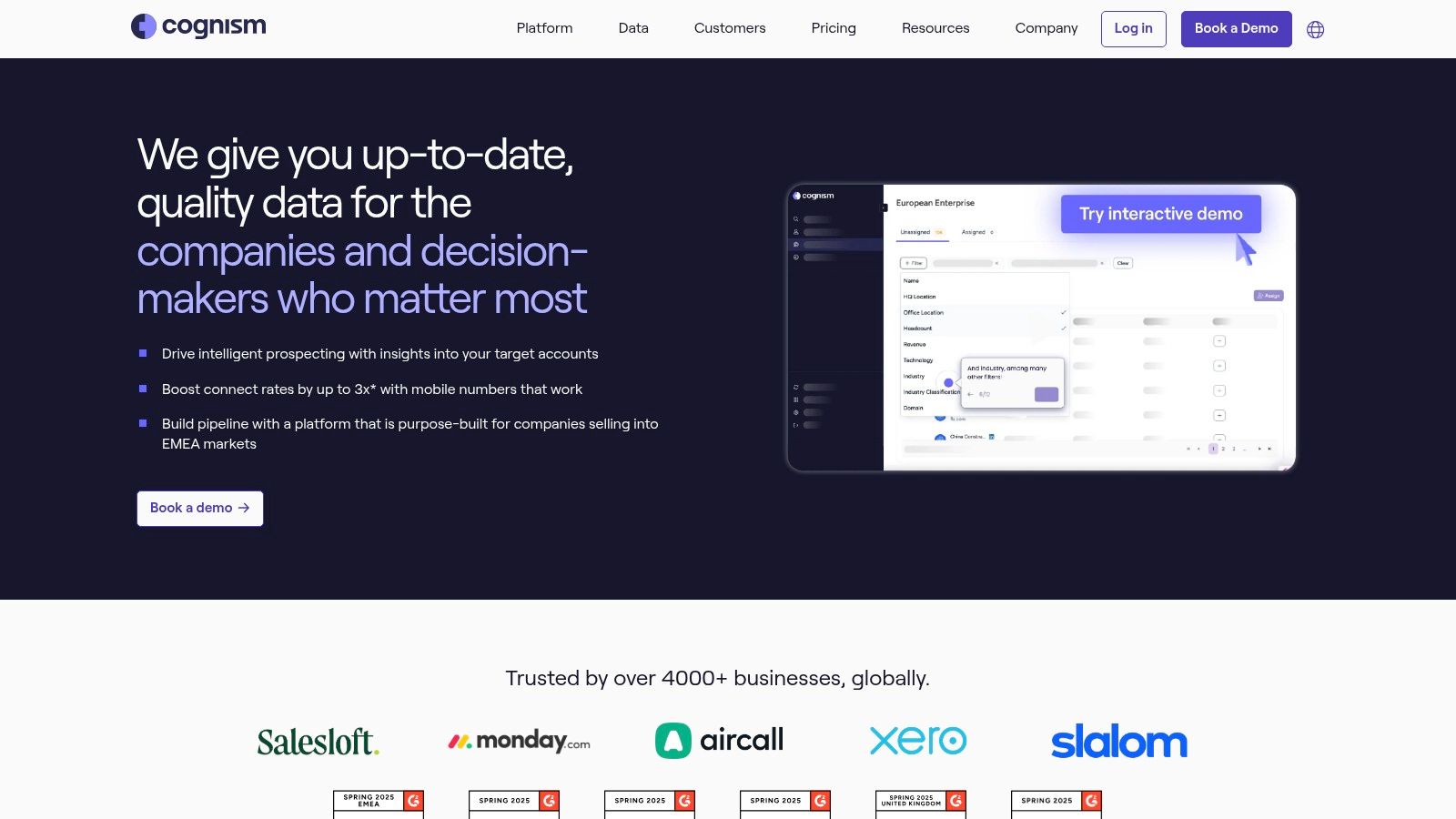
From my experience, the real power of Cognism lies in its global coverage and strict adherence to compliance standards, such as GDPR and CCPA. This makes it a go-to for teams prospecting in Europe and North America.
A common mistake I see is teams using the intent data just for cold outreach. The smart play? Utilize the intent topics (which track over 12,000) to create highly relevant, multi-channel sequences. Don't just send one email. If a prospect shows intent around "lead generation," your first email, LinkedIn message, and call script should all revolve around that specific pain point.
This unified approach makes Cognism one of the best intent data providers for teams that need to execute quickly and accurately.
Key Features & Considerations:
- Data Source: Proprietary data combined with third-party intent signals.
- Best for: Sales teams that need both account-level intent and direct contact information for immediate outreach.
- Limitation: The initial platform setup can be more complex than that of simpler tools, requiring some team onboarding.
- Pricing: Custom packages are typically sold as annual subscriptions.
- Website: cognism.com
7. TechTarget Priority Engine
TechTarget's Priority Engine is a powerhouse because it doesn't just scrape the web; it owns the playground. Using first-party intent data from over 140 niche B2B technology websites, it clearly shows who is actively researching solutions in your market. This makes it a top intent data provider for teams needing to know both who is looking and what content influences their buying decisions.
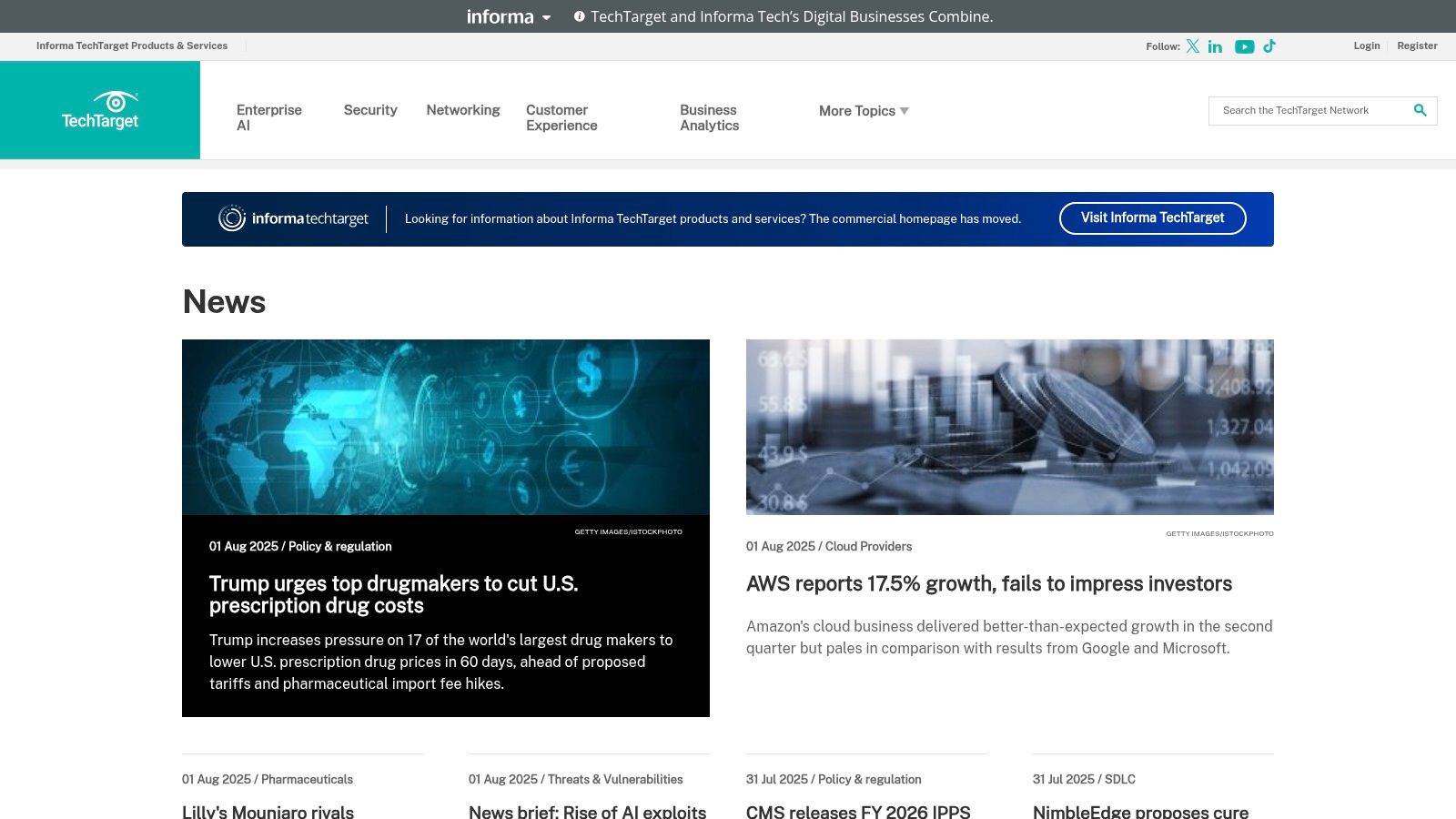
I've seen teams get immense value by mapping the specific content consumed by prospects to their outbound messaging. A critical error to avoid is ignoring these granular details. Don't send a generic email when you have this level of insight.
If a prospect from a target account reads an article on "cloud data migration challenges," lead with a hyper-relevant subject line and content addressing that exact challenge. Some users note that the filtering options are not as detailed as those on other platforms; however, the high-quality, GDPR-compliant data provides valuable insights for your sales team.
Key Features & Considerations:
- Data Source: First-party data from TechTarget's network of 140+ tech-specific websites.
- Best For: Tech companies wanting high-quality, relevant signals and detailed content consumption insights.
- Limitation: Filtering capabilities can be less extensive, and CRM integration may require more effort than some alternatives.
- Pricing: Custom subscription-based pricing.
- Website: techtarget.com
8. Lead Forensics
Lead Forensics employs a unique strategy that distinguishes it from many other intent data providers. It focuses mainly on your own digital assets. Its core function is to de-anonymize the traffic already visiting your website.
Instead of telling you who is researching topics across the web, it tells you which specific companies are on your site right now, what pages they’re viewing, and how long they’re staying. This transforms your anonymous website traffic from a passive metric into a pipeline of warm, actionable leads.
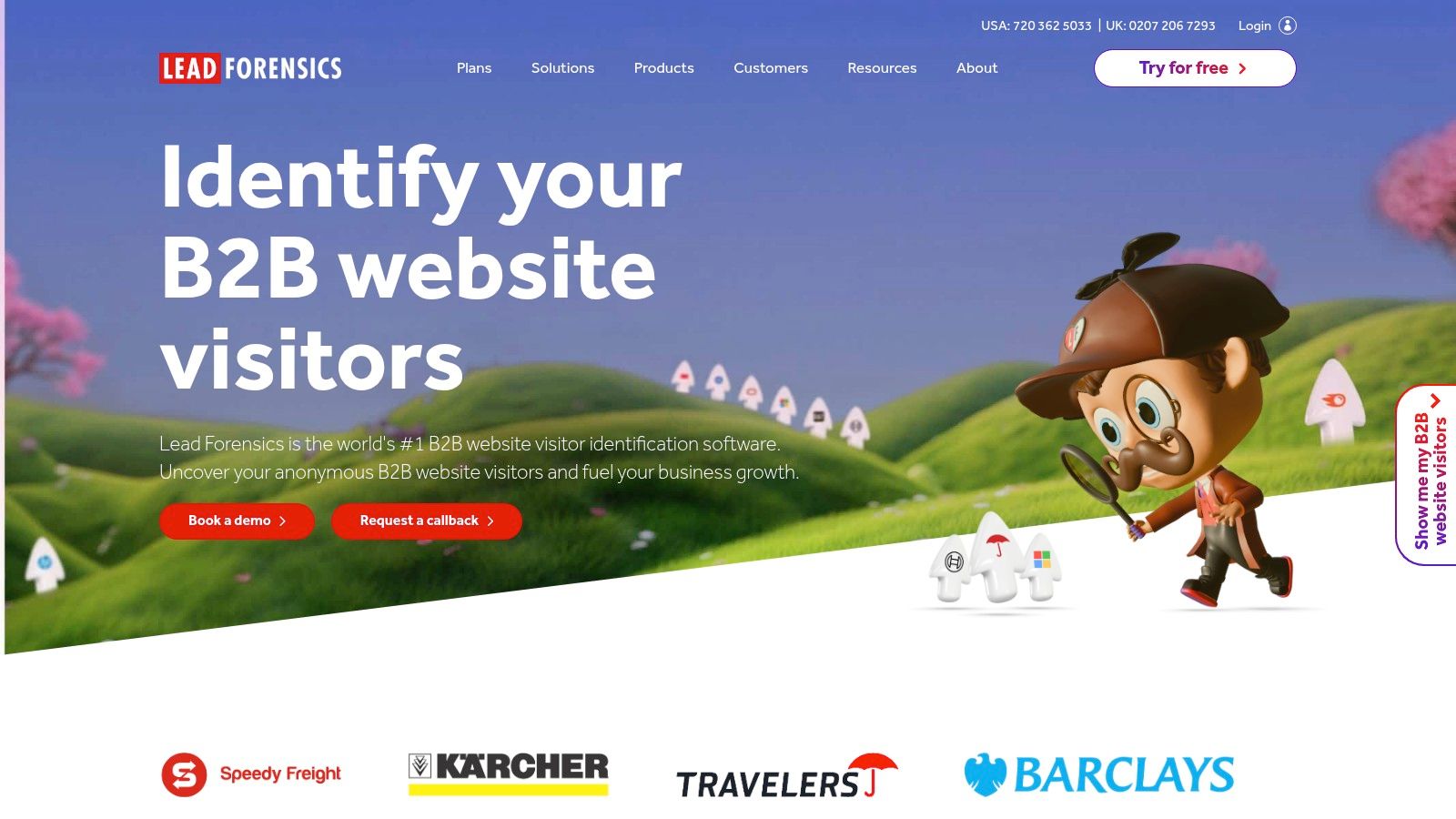
The platform’s real-time alerts are a game-changer for timely outreach. Imagine getting a notification the moment an enterprise target account lands on your pricing page. That’s a powerful signal.
Ignoring this context would be a pricey mistake. However, don't just call and say, "I see you were on our website." It's creepy! Instead, use the insight to tailor your message. If they spent five minutes on a specific case study, your outreach can lead with, "We helped a company in your industry solve [problem from case study], which seems to be a priority for many right now."
Lead Forensics provides an incredibly effective way to leverage your existing marketing efforts and prove your website's ROI.
Key Features & Considerations:
- Data Source: First-party data from your website visitors.
- Best For: Sales and marketing teams looking to capitalize on existing website traffic and identify in-market accounts.
- Limitation: Effectiveness is directly tied to your website's traffic volume; it can't identify intent outside your domain.
- Pricing: Custom, typically based on website traffic and feature set.
- Website: leadforensics.com
9. Leadfeeder
Like Lead Forensics, Leadfeeder also focuses on turning your existing traffic into a potent source of first-party intent signals. This makes it a top choice for teams looking to capitalize on the interest they're already generating.
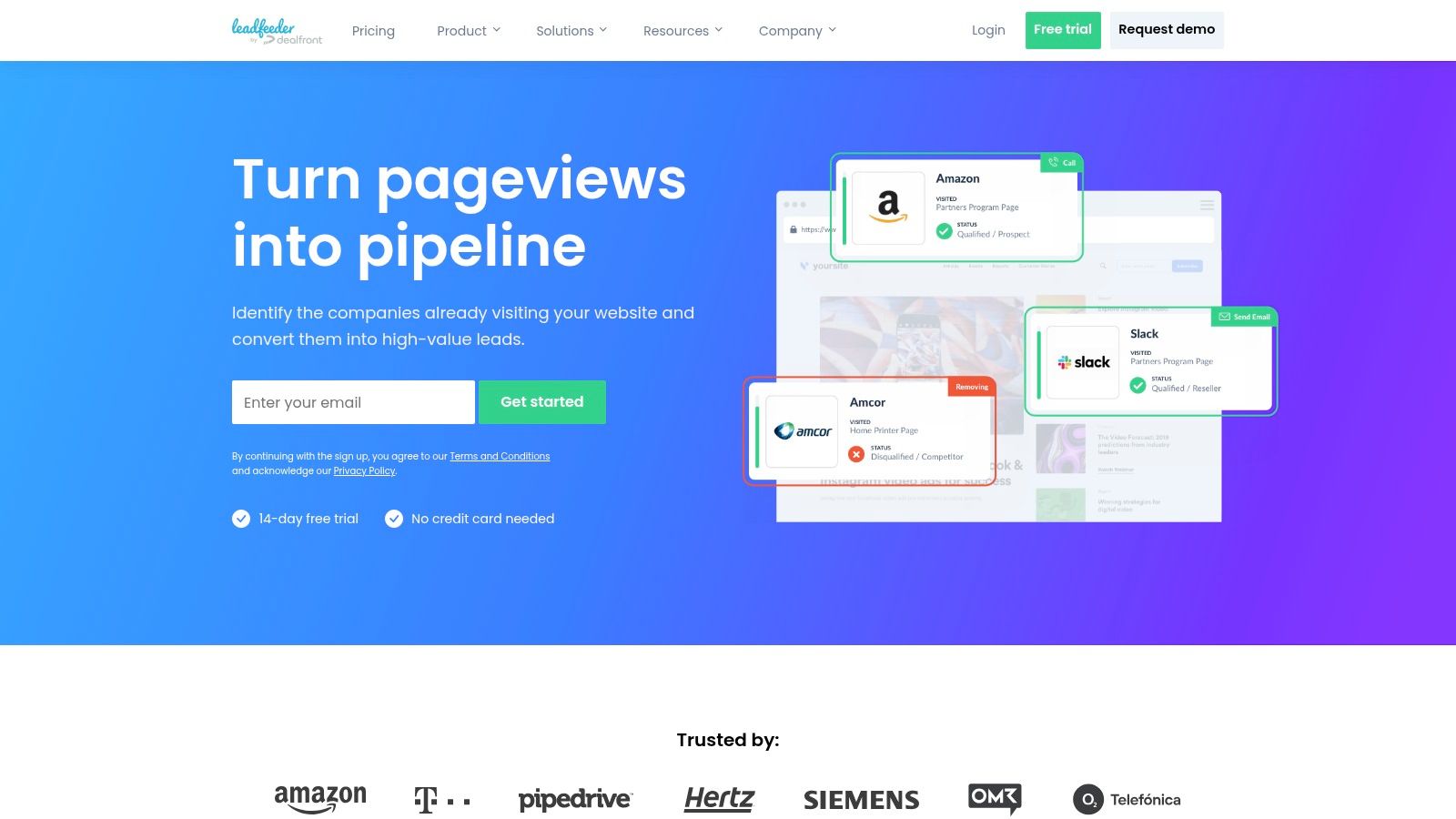
I've found its interface user-friendly, making it easy to set up filters and alerts for high-value accounts. The real power move is connecting it to your CRM and marketing automation tools. You don't want to let these valuable leads sit idle.
Create an automated process: when a target account views your pricing page, automatically generate a task for the account owner in your CRM and include them in a retargeting campaign. This turns passive website visits into immediate, actionable sales opportunities. It's a fantastic tool for bridging the gap between anonymous traffic and your sales pipeline.
Key Features & Considerations:
- Data Source: Data collected directly from the interactions and behaviors of visitors on your website.
- Best For: SMBs and marketing teams looking to maximize conversions from their existing website visitors.
- Limitation: Effectiveness is based on the quantity and the quality of the traffic it receives.
- Pricing: Offers a free basic plan; paid plans are tiered based on the number of unique companies identified.
- Website: leadfeeder.com
10. Lusha
Lusha is widely known as a top-tier contact data provider, but many overlook its growing strength as one of the best intent data providers. It masterfully combines its massive, verified contact database with real-time intent signals powered by Bombora's co-op.
This unique blend addresses a significant issue. It tells you which company is interested. It also provides you with direct contact information for the likely decision-makers. This synergy enables high-level account spikes to be transformed into actionable outreach lists almost instantly.
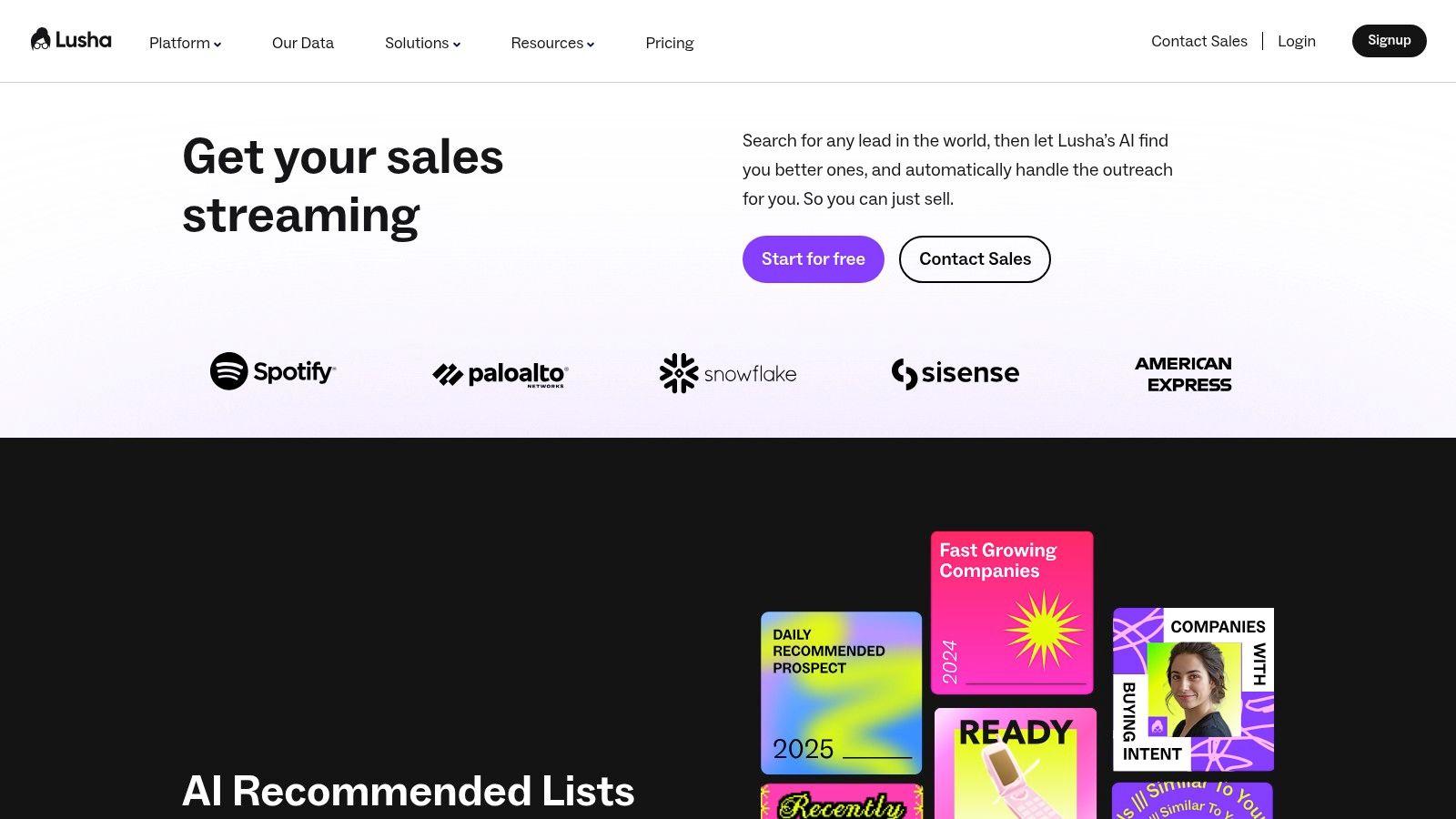
Lusha's dashboard is easy to navigate, making it an excellent starting point for teams unfamiliar with intent data. The true power, however, is activated when you sync it with your CRM.
You should not simply pull contacts from an interested account and send them a generic message. Instead, use the intent topic (e.g., "customer retention software") to tailor your first touchpoint directly to that pain point. This approach bridges the gap between knowing a company is looking and knowing who to talk to and what to say, significantly shortening the sales cycle.
Key Features & Considerations:
- Data Source: Combines its proprietary contact data with Bombora's B2B publisher cooperative for intent signals.
- Best for: Sales and marketing teams seeking an all-in-one solution for both account-level intent and direct contact information.
- Limitation: The core intent data is from a partner, so it may not be as deeply customizable as dedicated platforms.
- Pricing: Offers a free starter plan; paid plans are subscription-based with credit tiers.
- Website: lusha.com
11. G2
G2 is popular as a peer-to-peer software review site, but it is also a valuable source for high-quality intent data. Its uniqueness comes from the high-intent nature of its traffic.
Think about it: when someone is actively comparing solutions on G2, they aren't just casually browsing; they are deep in the consideration and decision-making stages of the buying cycle. This is first-party intent data at its finest, showing you exactly which companies are evaluating you and your direct competitors.
I've learned that simply having a G2 profile isn't enough. The real value is unlocked with G2's Buyer Intent data. This feature converts anonymous profile visitors into actionable leads by identifying companies viewing your page, category, and competitors.
Disregarding the competitive signals is an error you should avoid. If a target account views your competitor's G2 page right after yours, it's a critical moment. Your sales team needs to follow up immediately with a tailored message highlighting your key differentiators, turning a potential loss into a win.
Key Features & Considerations:
- Data Source: User behavior on the G2 software marketplace (reviews, comparisons, page views).
- Best For: B2B SaaS companies looking to capture high-intent buyers actively evaluating solutions.
- Limitation: Potential for bias towards larger, more established companies with more reviews.
- Pricing: Tiered plans, with Buyer Intent data included in paid packages.
- Website: g2.com
12. Aberdeen
Aberdeen has carved out a unique space among the best intent data providers by focusing heavily on predictive analytics. Instead of just showing you who is researching what, they aim to tell you who is most likely to make a purchase next.
They achieve this by combining behavioral data from online interactions with extensive targeting data from their opt-in user databases. This creates a powerful model that accurately predicts purchase intent.
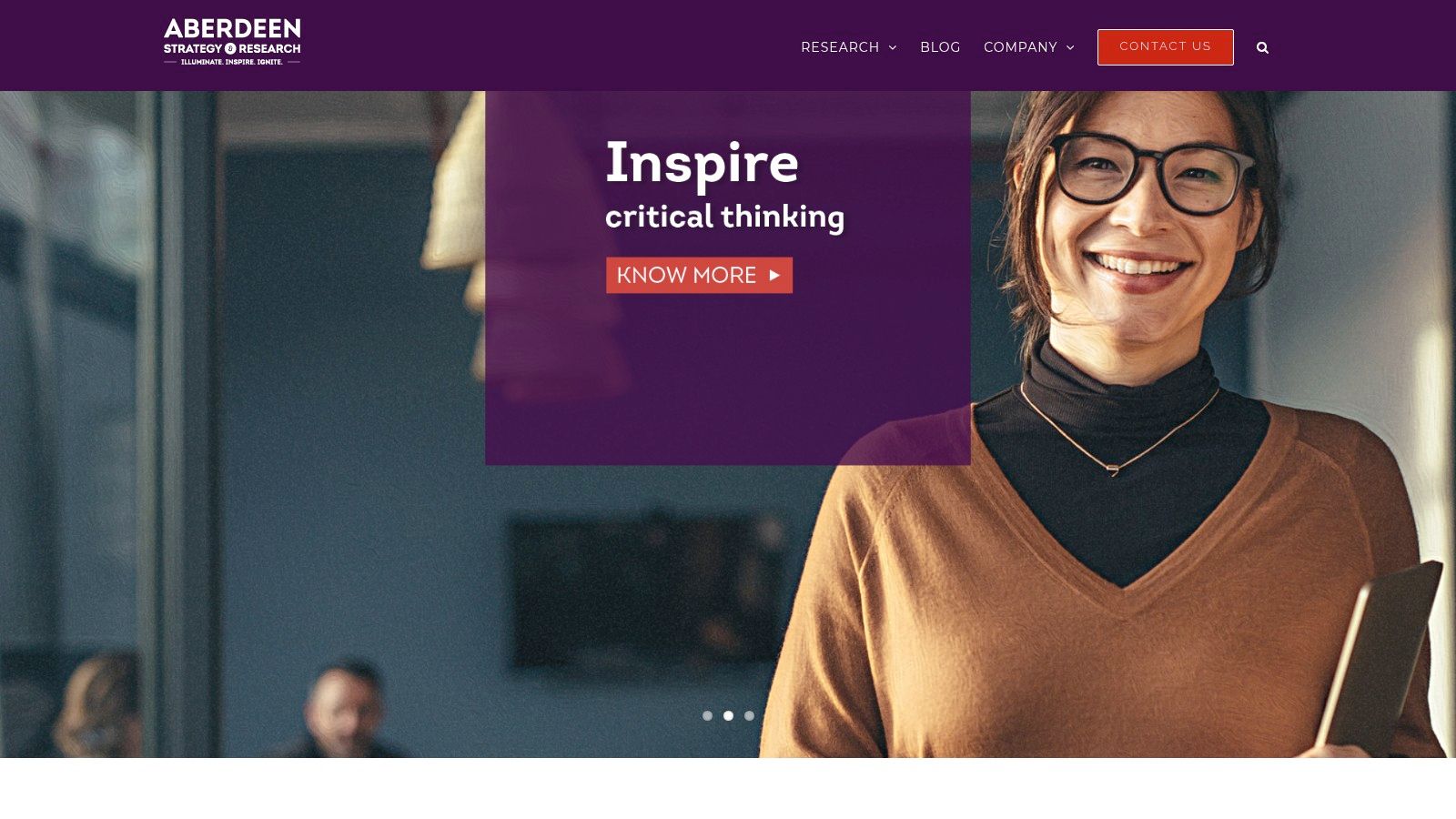
The "never-do" here is using Aberdeen's insights only for lead scoring. That's a rookie move. Instead, use the predictive signals to prioritize your entire account-based marketing (ABM) strategy.
If Aberdeen flags an account with high purchase intent for "cloud migration services," your marketing team should immediately target them with relevant ad coverage. At the same time, your sales reps should prepare a highly contextualized outreach sequence.
Their Salesforce integration makes this process much smoother, embedding the predictive intelligence directly into your team’s existing workflow.
Key Features & Considerations:
- Data Source: Proprietary mix of behavioral data and opt-in user databases.
- Best for: Teams wanting to move beyond raw intent signals to predictive purchase modeling.
- Limitation: The specifics of their predictive modeling can be somewhat opaque, or a "black box."
- Pricing: Custom quotes based on your specific needs and integration requirements.
- Website: aberdeen.com
Stop Guessing and Start Connecting With the Best Intent Data Providers
So, there you have it - the complete breakdown of the best intent data providers on the market. I’ve delved into the capabilities of giants like Bombora and 6sense, explored the all-in-one power of platforms like ZoomInfo and Demandbase, and even uncovered how tools like Leadfeeder can transform your existing website traffic into a goldmine.
It's a lot to take in, I know. But remember my story from the beginning? The one where I was chasing dead-end leads and facing serious burnout? The turning point wasn't about working harder; it was about working smarter.
The core lesson is this: the era of cold, untargeted outreach is officially over. Your expertise and time are far too valuable to waste on prospects who aren't ready or interested. The true competitive edge comes from knowing precisely who is in-market for a solution like yours, what specific problems they're trying to solve, and when the perfect moment is to connect.
This isn't just a tactic for hitting your next quota; it's a fundamental strategy for building a predictable, sustainable pipeline filled with high-quality opportunities.
Your Action Plan: Choosing Your Intent Data Partner
Feeling overwhelmed by the options? Don't be. Let's create a simple, actionable plan to help you choose the right tool for your specific needs. Consider this your personal implementation guide.
Step 1: Define Your "Must-Haves" vs. "Nice-to-Haves"
Before you even look at a demo, grab a whiteboard (or a trusty notebook) and answer these questions with your team:
- What is our absolute, number one goal? Is it identifying net-new accounts (like with Bombora or G2), enriching our existing CRM contacts (like with Cognism or Lusha), or converting anonymous website visitors (like with Lead Forensics)? Be brutally honest.
- What's our realistic budget? Intent data platforms are an investment. A startup's budget will be vastly different from that of an enterprise. Knowing your range will immediately narrow the field of options.
- How tech-savvy is our team? Do we need a plug-and-play solution with a simple UI, or can we handle a more complex platform like Demandbase that requires deeper integration and dedicated management?
Step 2: A Practical Evaluation Framework
Once you've shortlisted 2-3 providers, use this framework to evaluate them:
- Request a Data Sample: NEVER sign a contract without seeing the data first. Request a sample list of accounts that show intent for your top keywords. Is it relevant? Are these companies you actually want to sell to?
- Analyze the Data Sources: Ask them directly, "Where does your data come from?" Are you comfortable with their answer? A provider that relies heavily on a publisher co-op (like TechTarget) will have different strengths than one that scrapes public data or uses first-party signals (like GojiberryAI).
- Drill Down on Integration: Ask for a live demonstration of how the tool integrates with your specific CRM and sales engagement platform. A clunky integration will kill adoption faster than anything else.
Choosing from the best intent data providers is a significant step, but it’s the one that separates proactive, strategic sales teams from reactive ones. You now have the map, the compass, and a clear guide to the terrain. It’s time to stop guessing and start building meaningful connections with the buyers who are already looking for you. Your future self will thank you for it. ✨
Frequently Asked Questions
What's the biggest mistake people make when starting with intent data?
The single biggest mistake I see (and one I made myself) is treating intent data like a glorified cold-calling list. You receive a "surge" report; grab the first name you see and forward a generic template. It's a waste of a high-quality signal.
The absolute rule is: you must connect the intent signal to your outreach. If they're researching "API security," your subject line, email body, and call script should all address the challenges and solutions related to API security. Otherwise, you're just more noise.
How do I convince my boss to invest in an intent data provider?
Don't discuss features; focus on outcomes. Your boss cares about ROI. Build a simple business case. For example: "Right now, our sales team spends X hours per week on manual prospecting with a Y% reply rate. An intent data tool like GojiberryAI can cut that time by 80% and users report a 50% higher reply rate. This means we can reallocate Z hours to closing deals and potentially increase our pipeline by W%."
Use the data and case studies from the providers' websites to build your argument around money saved and money earned.
Can a small startup with a limited budget still use intent data?
Absolutely! You just have to be smarter about it. You might not spring for a full enterprise suite like 6sense. Instead, look at tools with more flexible pricing or a strong focus on first-party data. A provider like Leadfeeder offers a free plan to help you identify companies visiting your site.
You can also use "manual" intent data tactics, like setting up alerts for keywords on LinkedIn or monitoring Q&A forums related to your industry. The principle is the same: find the digital breadcrumbs and follow them.
Ready to see how AI-driven, first-party intent can transform your pipeline with unparalleled accuracy? GojiberryAI moves beyond broad topics to identify specific buying signals from your ideal customers. Explore GojiberryAI and discover the power of knowing exactly who is ready to buy, right now.
More High-Intent Leads = Your New Growth Engine.
Start Now and Get New High Intent Leads DeliveredStraight to Slack or Your Inbox.







.png)

